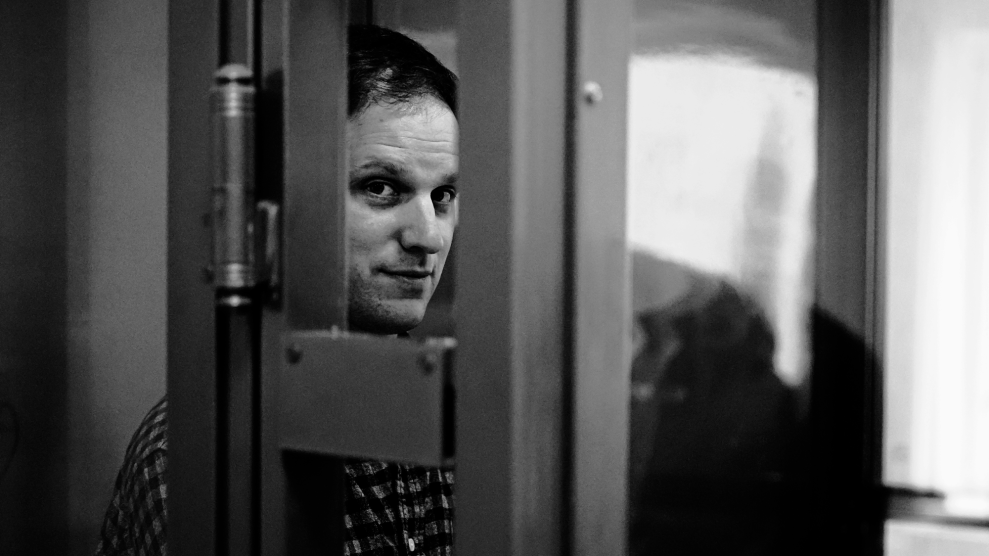
The Devil Came on Horseback (a BreakThru Films production) tells the story of genocide in Darfur through the eyes of Brian Steidle, a former U.S. Marine who lands a job—through Craigslist—as an unarmed military observer taking photographs for the African Union in Darfur. Stark footage of decimated villages and the smoldering remains of people—including children—burned alive make The Devil Came on Horseback a harrowing film to watch. Steidle’s reactions to the genocide are compressed into a compelling, beautifully photographed hour-and-a-half film that captures the Sudan’s natural beauty as well as its turmoil.
Steidle is hired to monitor a 2004 cease-fire meant to end a 20-year civil war between the Sudanese government, a military dictatorship led by wealthy Arab Muslims in the north, and the Sudan People’s Liberation Army, which was fighting on behalf of mostly poor, rural, and Christian black African tribes to the south. A week after responding to the online ad, he gets his plane ticket to Khartoum, Sudan.
Armed with a digital camera, an audio recorder, and notebooks, Steidle travels throughout Sudan and Chad with a straightforward assignment: take pictures, talk to locals, and submit detailed reports to the AU about what he has seen and heard. He had no idea what he was getting into. As he later reports, more than 2 million people perished and about 4 million had been displaced because of the conflict, and the cease-fire had not stopped the killings. Darfur’s population, which is black, was (and still is) being targeted by armed groups known as “the devil on a horse,” or Janjaweed. The Janjaweed, who are allegedly sponsored by the Sudanese government, kill Darfuris simply because they are Africans and not Arabs.
The film tells a horrific tale at a brisk pace; cameras shoot from helicopters, from moving vehicles, and inside people’s homes; they hang onto Steidle’s—and the Janjaweed’s —every move.
Steidle photographs villages that the Janjaweed have plundered and burned, he interviews rape victims, and talks to parents whose children are missing. Many of the attacks follow the same script: First, the raiders cut off power to local cellphone towers; then helicopters bomb the village; finally the Janjaweed arrive on horses, on foot, or in jeeps, and burn everything. Only ashes are left behind. A Janjaweed defector tells Steidle, “The order is to go kill. When they attack a village, they start repeating their specific slogans, like ‘kill the slaves.’ Then they attack directly and quickly.”
The job takes its toll on Steidle. In a passage from his book (also titled The Devil Came on Horseback), he recalls someone shouting at him, “What good are you? You can’t protect us,” after which Steidle writes in a letter to his sister, “We don’t have any authority here. [A man whose wife had been kidnapped in a raid] pointed across the hut and said ‘That is the man who stole her.’ The guy who was being accused just shrugged and admitted it. What could we do? Nothing.” Excerpts like this from the book and similar scenes in the film make you wonder why Steidle was hired in the first place, and how effective the AU really is.
By the time his job is up, at least one million more people have been displaced by militias in Darfur. Later, Steidle learns that only four of the 80 reports he submitted were actually read because, he suspects, the Sudanese government was diverting his mail.
When he arrives back in the states, New York Times columnist Nick Kristof publishes his photos and presents his story to a mainstream audience. He meets with Condoleeza Rice and debates Sudanese immigrants who don’t believe his reports. “The things you see here were not meant to be seen. You see people who have no value for human life,” he says while showing his pictures to an awestruck audience. In one of the film’s final shots, Steidle breaks down and begins crying, no longer able to detach himself from the truth behind the story that he’s been watching unfold.











